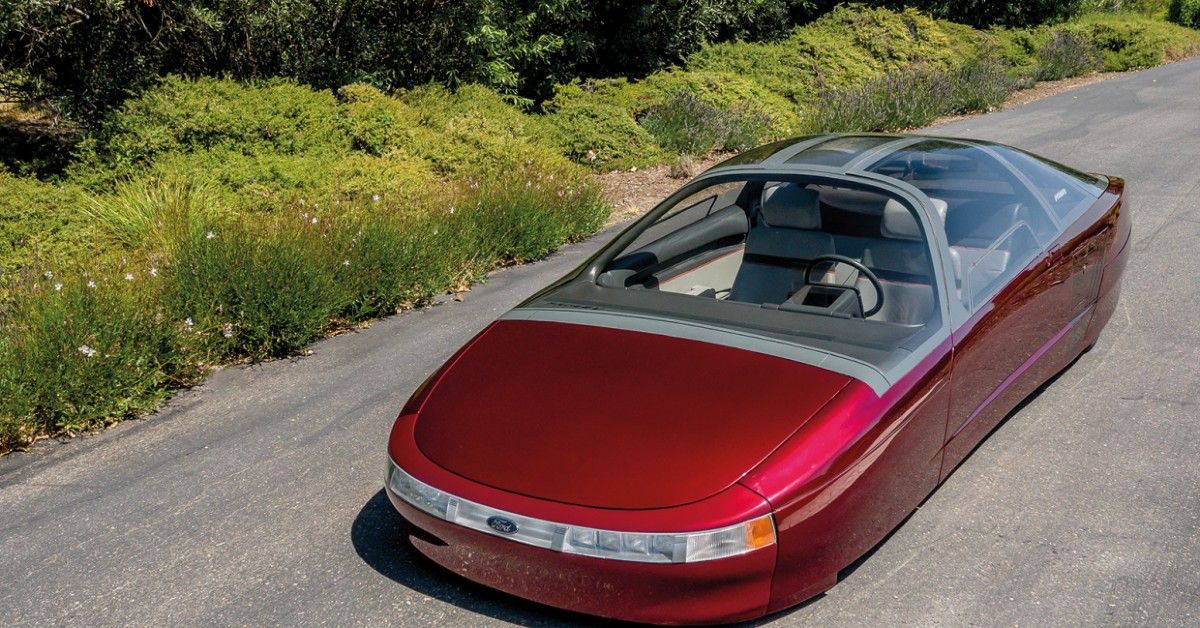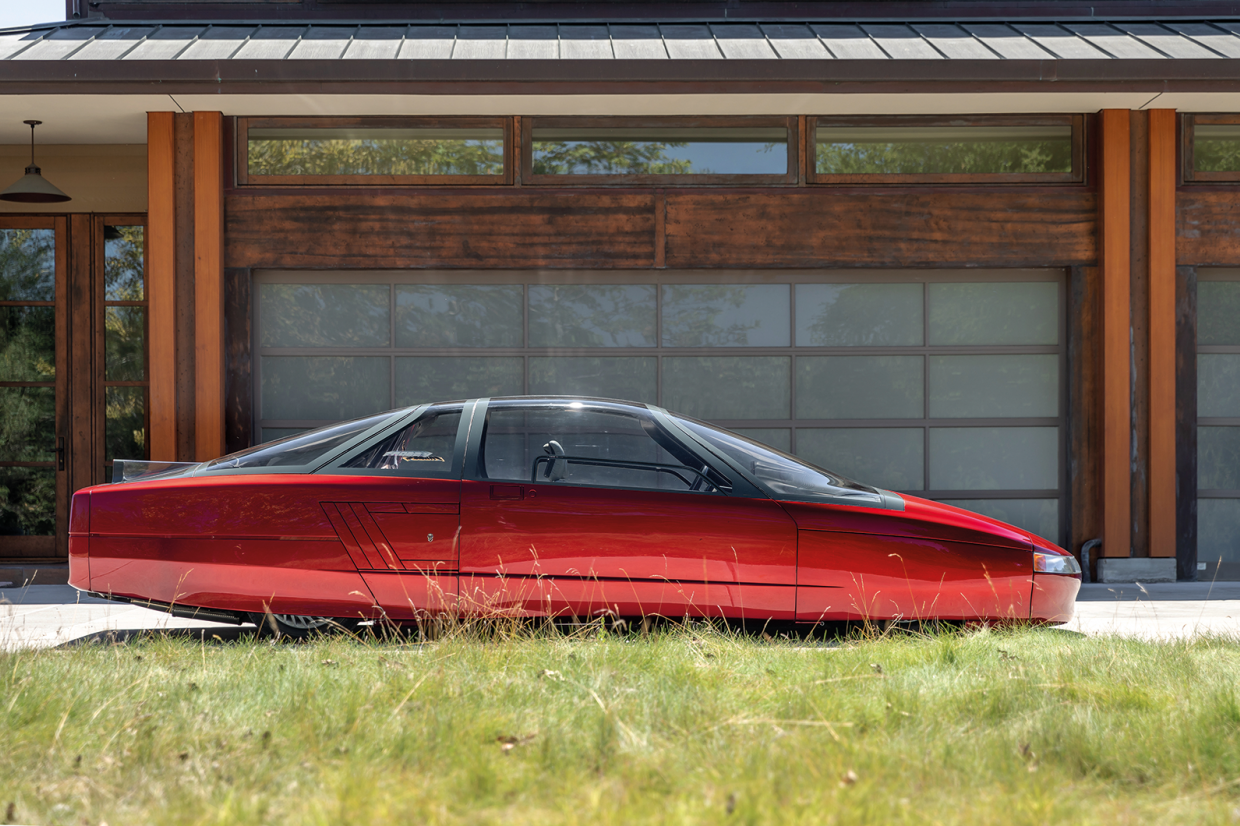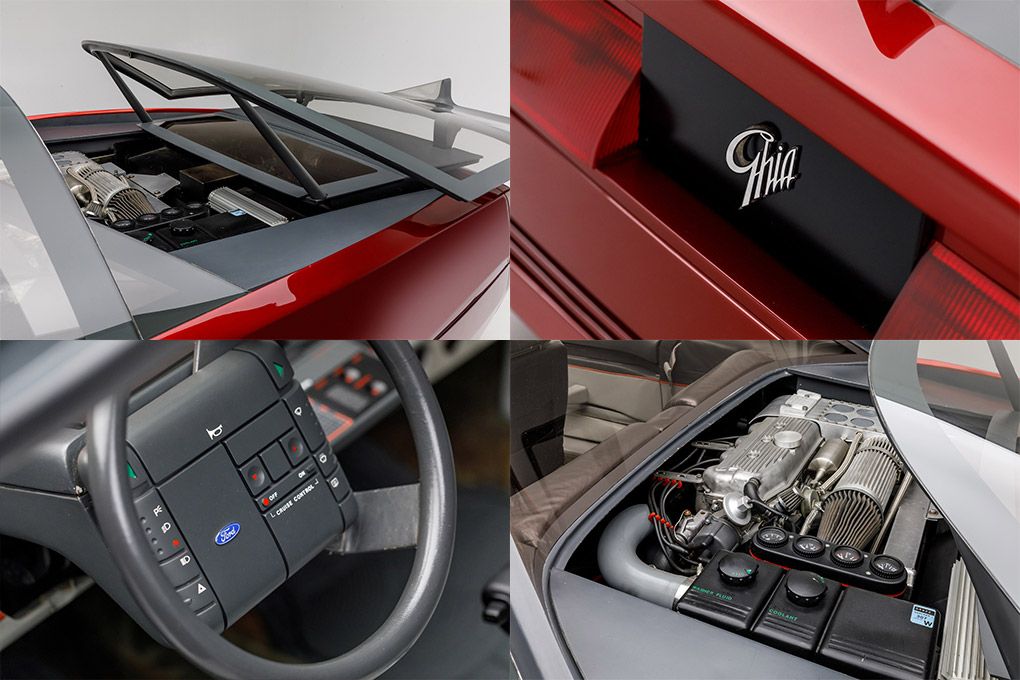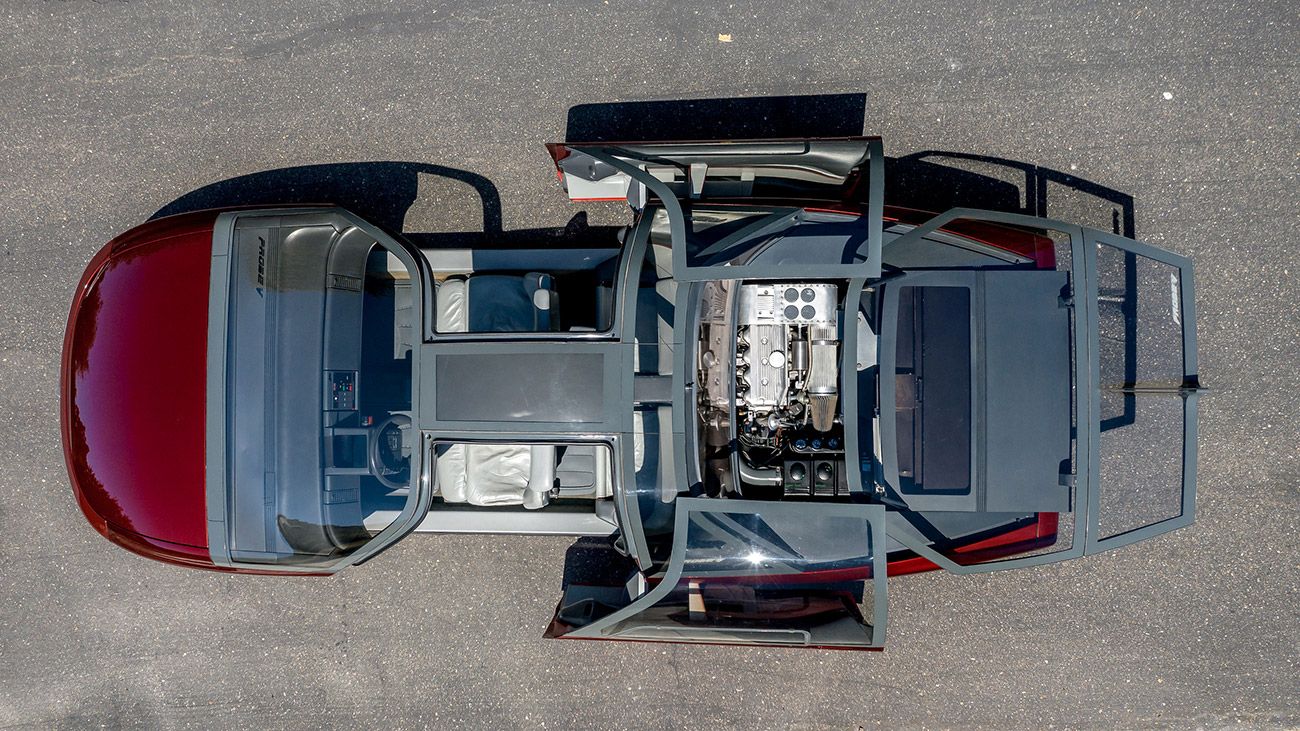Ford united with Ghia to craft the unique Probe concepts from 1979-1985. Don Kopka, the Executive Director of Advanced and International Design Studio at Ford, envisioned a Ford passenger car that would focus on aerodynamics and fuel efficiency. After four installments, Ford launched the final Probe V at the 1985 Frankfurt Motor Show. This concept car was an attempt to maximize the aerodynamic efficiency of a four-passenger sedan.
The name Probe was derived from the concept streamliners that gave the car its shape. With optimistic futurism in mind, Ford made serious attempts to minimize the car's drag while equipping it with the amenities of a conventional vehicle.
With a subtle refinement from its predecessors, the Ford Probe V had more character and panache than any of the other installments. Ford played a huge gamble of aero-styling, and surprisingly it paid off quite well with the Probe V.
A Streamline Build
The ultimate Probe Concept V was equipped with a front-engine, rear-wheel-drive arrangement. The position of the four-cylinder, 16-valve turbo motor was set transversely from the rear passenger seats but ahead of the axle.
The space frame construction was skinned in thermoplastic and flush-fitting. Borrowed from its predecessor, the skinny wheels were hidden by spats, although the flexible membrane seals were included in the body's outer surface. This enabled the membrane to clear the tires every time the car made a turn.
One of the underlying motives was to reduce the drag of the Probe V by 10%. Ford remarkably achieved this feat by emerging with the 0.137 CD, similar to that of the General Dynamics F-16 Fighting Falcon fighter plane.
This helped Ford meet the CAFE (Corporate Average Fuel Economy) and created a revolution in Detroit while brands like Chrysler and General Motors scrambled to catch up. Compared to the current automotive arena, the recent Volkswagen XL1's drag is 0.186. Ford accomplished a lower figure 35 years ago.
A Family-Friendly Hovercraft
The layout of the Ford Probe V was similar to that of a Lamborghini Marzal. At first glance, the sleek shape of the Probe V looked slippery. It was equipped with wheel covers at all four wheels, and the front covers even turned with the wheels. This made the futuristic sedan look like it was floating.
A large glasshouse covered the passenger compartment of the Probe V. Parallelogram hinges swung the door out and back in, which allowed ample space for all occupants to enter the car at once. The rear glass canopy could also be dragged back for faster access to the engine amidship. This allowed the Ford concept car to have a low, sleek front end and a cab-forward design with a low nose.
An ode to the old American glory days, the design of the Probe V reminded folks of the 1950s. It was an amalgamation of the Ford turnpike cruiser, and the General Motors' Motorama splashed with sleek chrome, antennas, and tailfins. Probe V converted this concept into a lustrous aero-mono form with a transparent tailfin. This enabled the car to be more efficient and have a wind-cheating displacement.
The interior of the Probe V continued to be quite similar to its previous versions, aligning comfort and convenience above anything else. With a padded steering wheel, the concept car came equipped with a telescoping digital instrument, overhead console, and head-up displays for the speedometer.
Paving A Future Pathway For Ford
The concept car looked like it had crash-landed from a different Universe. Alongside this, the Probe V also had a dynamic performance. It was mainly available in two colors: Rio Red and Seafoam Green Metallic. The lustrous and vibrant colors made it a head-turner on the streets.
Even if it was not intended to, Ford streamlined the future models based on the Probe V design, especially the Taurus, which appeared around the same as the former. Probe V paved a pathway to showcase that the evolutionary road to creating aerodynamically efficient cars was not just a PR stunt but truly had potential.
The research and investment that went behind Probe V reaped massive profits for the company. Probe V was the perfect culmination of all the installments from the series that facilitated a change in design and had improved concepts, which changed the entire automobile industry.
The Probe V resurfaced at Christie's Auction in 2002 after its debut at the Frankfurt Auto Show in 1985, with its retro and rugged design. The car was sold for $19,975. Being one of the most popular cars from the Probe series, the Probe V was displayed at the Peterson Automotive Museum until January 25, 2021.




